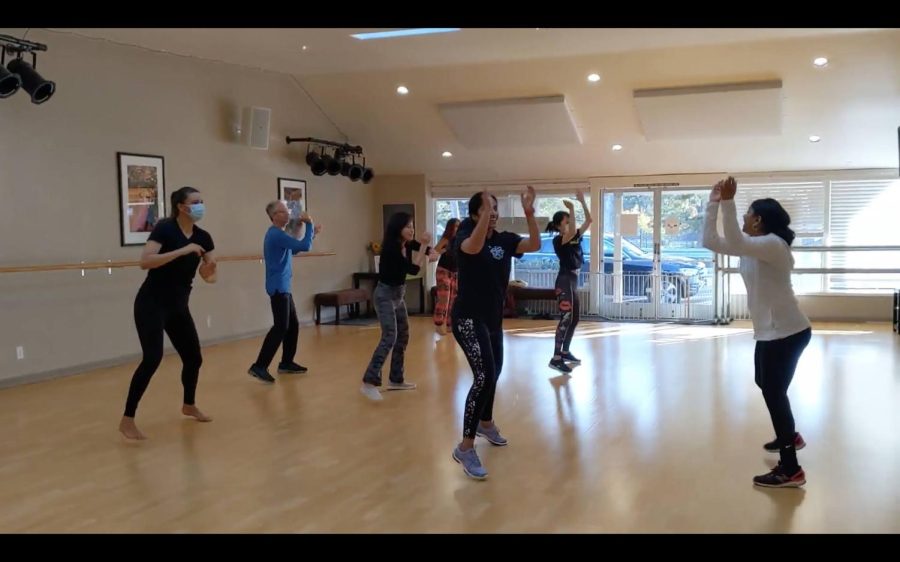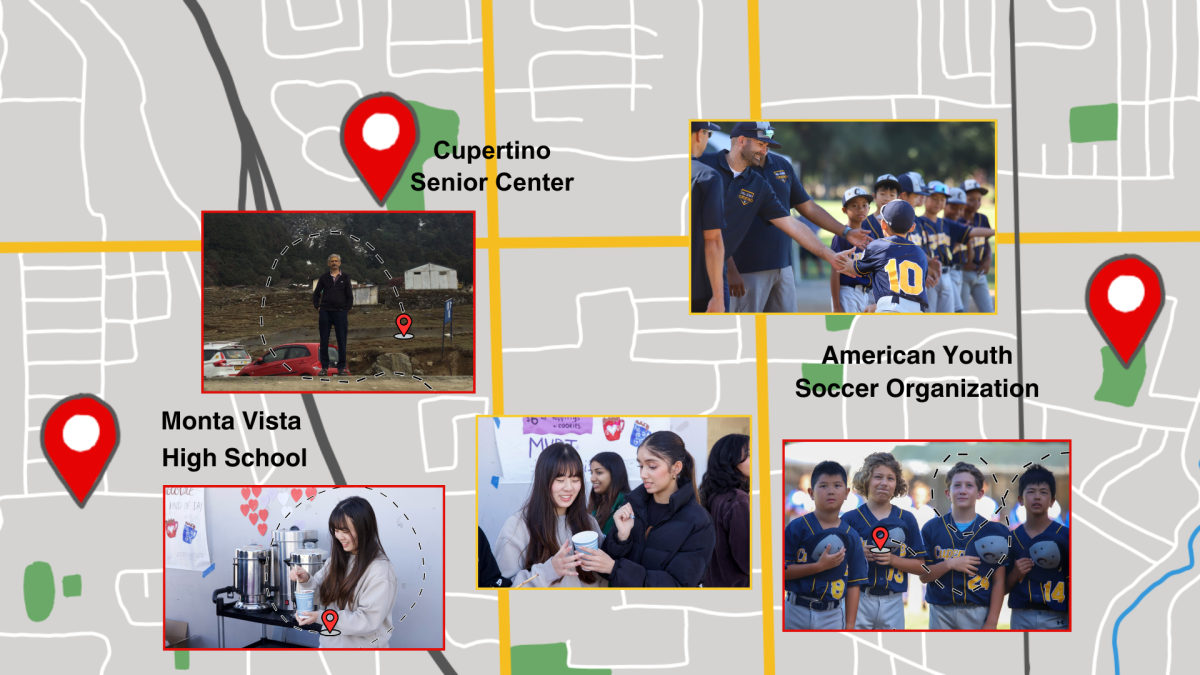Coaching through the ages
Analyzing how coaches change their coaching style depending on the age of their students
Dance Instructor Anagha Kulkarni teaches her students a dance routine at the Arete Dance Center in Los Altos. Photo Courtesy of Anagha Kulkarni | Used with permission
November 12, 2022
Coaches often have to change their teaching styles based on the age and skill level of each player in order to bring out the best in them, often taking the players’ health into account. Dance Fitness Instructor Anagha Kulkarni, who primarily teaches adults aged between 20 and 60, offers multiple dance classes for different skill levels, such as low, medium or high intensity but says that anyone of any age can enroll in them.
“If someone has a knee issue, for example, and you’re not able to do high impact, high-intensity moves, then I need to provide them with an alternative which may be gentler on their knees,” Kulkarni said. “There may be some correlation between health conditions and age, but that’s not how I approach it. Anybody could have a shoulder issue, or anybody could have a knee issue.”
During her classes, Kulkarni also emphasizes the technique of dance as she believes that perfecting good technique from the beginning will allow her students to find quick success in her classes. Senior and Marching Band mellophone section leader Dylan Ong focuses on similar aspects, noting how he teaches incoming freshmen about proper marching technique, from holding their mellophone with correct posture to how their lips are adjusted onto their mouthpiece.
Senior and Varsity Golf Member Janelle Cai reiterates Kulkarni and Ong’s point, highlighting the importance of a coach in golf since learning proper technique is key.
“It’s hard to know what you’re doing wrong unless you have a coach,” Cai said. “You kind of just swing however feels right, and when it goes wrong, you don’t know what’s wrong. So it’s helpful to have a coach point out what you can fix.”
Ong says that keeping people motivated is also an integral part of a coach’s job, and he often takes it upon himself to keep his section engaged. To encourage freshmen and help them feel more included, Ong bonds with his section through interactions outside of Marching Band, such as getting food and conversing during school.
“I think the big thing for me was just making sure it was a fun environment,” Ong said. “Sometimes that [takes] priority over actually being good [at performing].”
Ong explains that rather than altering his coaching style according to the ages of the students, he focuses more on their personalities, as he has noticed that his freshmen are very mature. Borelli agrees, explaining how she adapts to her players’ comfort levels because the team composition changes every year.
“I’ve had teams where some players needed a lot more coddling than others because they would just totally break down and start crying, and [there are] some players you can yell at,” Borelli said. “So you have to understand what motivates each different player.”
While Kulkarni agrees with Ong, she also wants to teach in a way that helps her students “forget about judging themselves” and focus on having fun in her class. At the same time, she has to make sure that they know their own limits during the class.
“I [have] to be a little careful about motivating people [too much],” Kulkarni said. “Sometimes, you don’t know when you’re crossing the line because you don’t know [when] someone’s not listening to their own body, but they’re [instead] listening to [me] and get injured.”
Kulkarni says bonding with others is a big part of why she teaches, and she strives to create new relationships with others with every class she leads. She believes that by creating a safe community where people of all ages can congregate and have a good time, participants will motivate each other to participate and have fun together.
“I love building communities of people who can connect with each other, meet up or share interesting information with each other outside of class,” Kulkarni said. “It’s not just about coming together for the class. I bonded with several of my students and I don’t call them students anymore. They’re now my friends.”



















